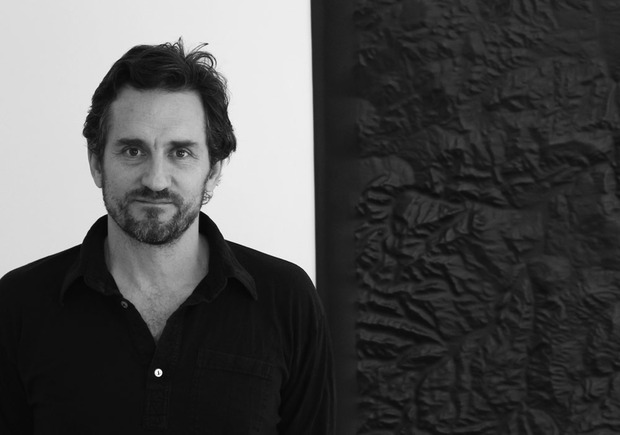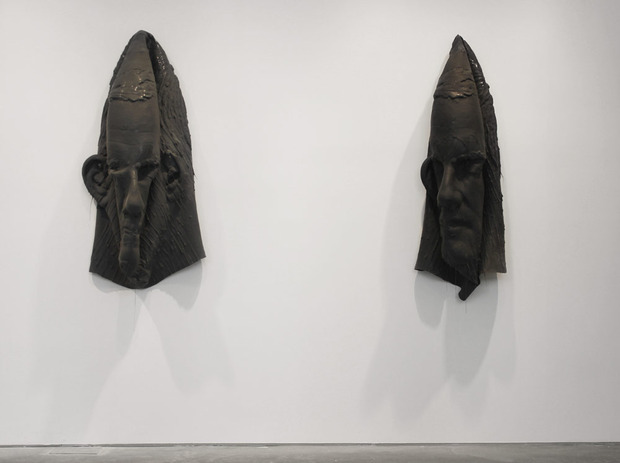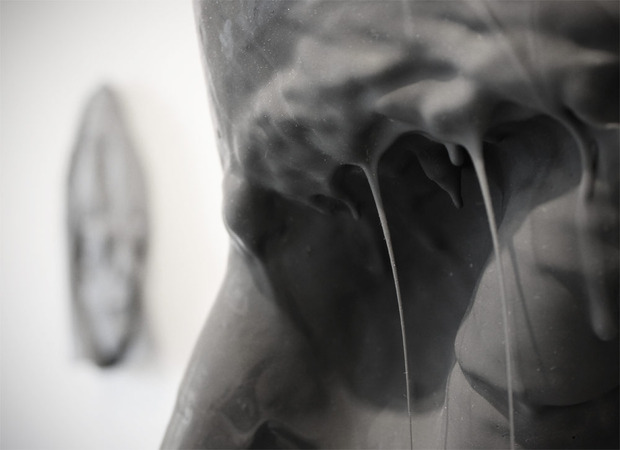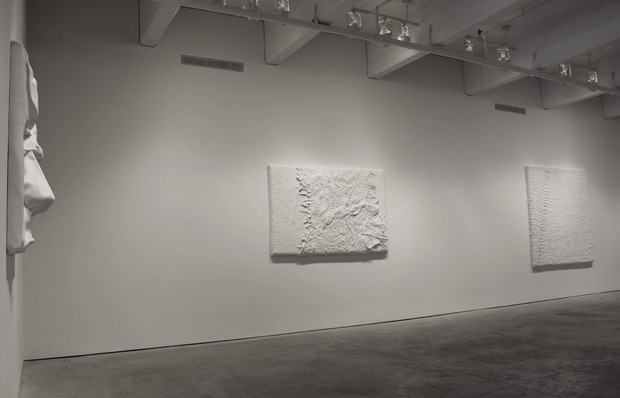Interview: Richard Dupont
The pioneering, digitally-minded sculptor shifts toward material and process

Artist Richard Dupont first caught our attention years ago as one of the early artists to experiment with distortions of digital models in a physical space. Fond of manipulating scans of his own body, Dupont has produced everything from shape-shifting statues to resin heads filled with everyday objects. His latest evolution involves two simultaneous shows at Carolina Nitsch and Tracy Williams in NYC. Both exhibitions show a movement toward process- and material-oriented work while retaining digital origins.
Fascinated by the drooping rubber heads—which Dupont admits can be seen as entropic versions of Easter Island moai—we stopped by the galleries to discuss the artist’s recent work.

How has you work evolved since we last caught up with you?
I think the sub-narrative of the overall work has continued. In general, the use of the digital model of the body is something that I’ve confined myself to. Everything is moving and has been moving away from pure information—it’s always been about reconciling the contradiction of using a digital starting point and ending in a material space.

How did the deflated heads series come about?
“It’s tricky to get the heads to hang like drapery.”
I had this series of clear resin heads with objects embedded in them. It culminated with a 700-pound solid resin head, and I had the original foam mold that I used to make the piece. It was interesting as an object and I was trying to do something with it, so I brushed a layer of rubber over it and it didn’t work. When I went to peel the rubber off, it just came off in one piece. I immediately nailed it to the wall and it was one of these “aha” moments that you wait for in the studio. I went to mimic that—the trick is to brush it on, but not too thin or it will tear, and not too thick or it will hold its volume. It’s tricky to get the heads to hang like drapery.
What is it about rubber that fascinates you?
Rubber has this elasticity in it that’s related to flesh but is also very industrial. I started trying with latex, but it breaks down really quickly. Eva Hesse used a lot of latex self-consciously knowing that it was going to disintegrate, but she loved the material so much that she allowed it to disintegrate. There was a certain authenticity in that.

Where do you see the influence for this latest work coming from?
I think for me these have a lot to do with formlessness. They’re related in many ways to earlier work. In a sense, beginning with someone like Alberto Burri and those paintings of plastic that are melted or dripping, but also all the work from the ’50s and ’60s like Robert Overby, Richard Serra, Eva Hesse and Bruce Nowman. Also in many ways Jasper Johns—he did all that work in the beginning where he was doing rubbings of his face and trying to get his body into the surface. Then there’s the painting where he has the encaustic surface that’s been gnawed into.
There’s that period where for the first time people are thinking about formlessness, anti-form, allowing the material to dictate the end result and also the idea of trying to get the body into that space. I think that that period really opened up a new period of art-making in which the result is less a willful, self-conscious imposition of what you want it to end up looking like.
Both exhibitions open 2 May and run through the end of June 2013. Keep an eye out for a monumental, aluminum version of one of Dupont’s heads to pop up in Columbus Circle later in the summer, and be sure to check out our video on the artist from 2008.
Images by James Thorne. See more in the slideshow.


















